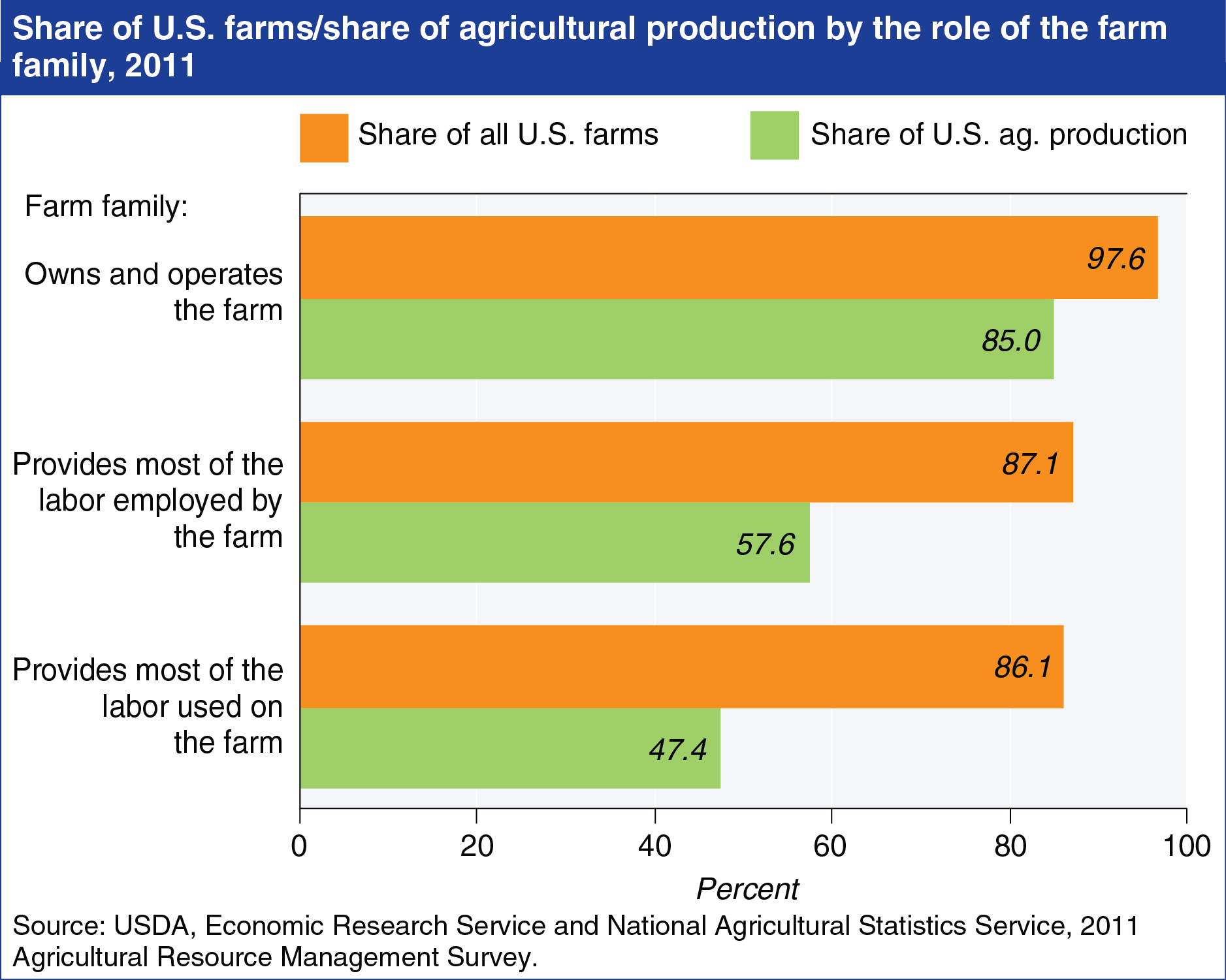Family farms dominate U.S. agriculture
- by James M. MacDonald
- 10/15/2014

The United Nations has designated 2014 as the "International Year of Family Farming" to highlight the potential family farmers have to help feed the world. But what is a family farm? USDA’s Economic Research Service (ERS) defines family farms as those whose principal operator, and people related to the principal operator by blood or marriage, own most of the farm business. Under the ERS definition, family farms represent 97.6 percent of all U.S. farms and are responsible for 85 percent of U.S. farm production. Other definitions rely on who supplies the labor. Large farms often rely heavily on hired labor, but farm families who own the farm and provide most of the farm’s labor still account for 87.1 percent of U.S. farms, with 57.6 percent of farm production. Some farms also hire firms to perform some farm tasks. If we account for the labor provided by those firms, family farms that provide most of the labor used on the farm still account for 86.1 percent of farms and nearly half of production. This chart can be found in "Family Farming in the United States" in the March 2014 Amber Waves.


